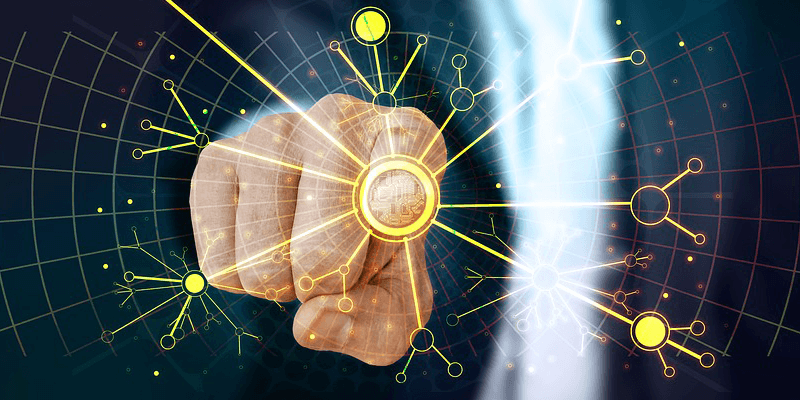
The knowledge and technologies mastered over the past decades have brought humanity closer to the moment when usual ways in management, economy, and society entail breakthrough changes. The transformation process has already begun.
The near future of society and business determines a new technological structure based on the digital economy, which many experts call the Fourth Industrial Revolution or Industry 4.0.
The era of digitalization gives companies new opportunities, and business acquires allies in the face of new technologies. Thanks to these technologies corporate decision-making mechanisms that are already familiar to organizations got the opportunity to change.
At the same time, digitalization trends pose many challenges for companies focused on finding ways to apply innovations. One of the most exciting ways to carry out new technologies is risk assessment and further prevention with Artificial Intelligence.
Let’s briefly describe what risk assessment is.
Risk assessment is a process of risk identification and analysis to choose the necessary safety arrangements. It can be used in a variety of situations: while developing a product, during the feasibility analysis or even for the workplace organization.
The possible practical way to use risk analysis is the situation when you want to calculate the possibility of combining the production scheme of different medications.
You should use risk evaluation when you face the problem of decision-making — the issues where there are no precise, unambiguous, regulatory requirements. Risk analysis is necessary to make decisions that do not have a clear standard, i.e. in a situation where you have uncertainty.
Risk assessment is a set of analytical measures that allow to predict the possible additional entrepreneurial income or conversely – analyze the potential damages from the arising risk.
Depending on the specific domain, business environment, strategy and other factors, the company can face various types of risks. Nevertheless, there are common goals, the achievement of which should be facilitated by an effectively organized risk evaluation process.
As a rule, the main goal that companies pursue when creating a risk evaluation system is to increase work efficiency, reduce losses and maximize income.
Indeed, companies that effectively manage ongoing risks more effectively carry out the relevant innovations.
How can we use artificial intelligence (AI) for risk assessment and prevention?
Although computers can perform tasks that are traditionally associated with human intelligence, there are no truly “stand-alone” technologies for risk evaluation. It means that companies that want to apply AI-powered strategies must implement procedures to properly test their effectiveness before and after launching, providing continuously monitoring. As errors in risk detection can lead to irreversible consequences.
In this case, the term “AI” is more used as a high-level technology that uses volumes of data regardless of its quantity to increase productivity and overall quality. Qualitative risk assessment can reduce project time and average costs.
Of course, no one argues that people can carry out work efficiently. However, several factors can affect productivity: emotions, mood, or health – everything that we can consider as a “human factor“.
The use of artificial intelligence in risk assessment can significantly help in different domains. Let’s find out how.
Medicine
The risk assessment and prevention in the health-care domain is quite an important issue – life is at stake here.
AI helps identify risks in the following medical care processes:
– Diagnostic (risks of incorrect diagnostics)
– Medical (risks of surgical treatment, risks of pharmacotherapy, risks of undesirable medication reactions)
– Rehabilitation (risks of rehabilitation defects)
– Hospitalization (risks of unwanted incidents)
Doctors already use AI to pre-detect the health risks of patients. Philips has developed a technology that automatically detects tuberculosis in a chest x-ray. Using a considerable number of images for deep machine learning, experts taught AI to find the slightest signs of tuberculosis in the patient at an early stage of the disease.
Another example is a Greek project to predict the risk of orthopedic disease, namely osteoporosis. The proposed solution aims to assist specialists in osteoporosis prediction, avoiding unnecessary further X-ray analysis.
Building and construction
The use of artificial intelligence in building and construction is becoming a new norm.
Probably almost every organization has error prevention systems. Actually, such systems can prevent many issues. Nevertheless, this precaution can be not useful enough in the low-security conditions or staff overstrain.
Construction is one of the most traumatic areas. Therefore, monitoring the construction sites safety, as well as monitoring and forecasting risks, is one of the prior tasks for construction companies.
This set of tasks can be solved based on all the accumulated data from the construction sites of earlier projects. The data can include not only documentation but also audio and video materials that can be turned using machine learning algorithms to the system of automatic detection, evaluation and prevention of potential dangers.
Using image recognition algorithms, you can detect workers without helmets and vests. The analysis of the building architecture will help to avoid potentially dangerous situations associated with falls, electric shocks, etc. Based on the collected knowledge, engineers can develop such AI algorithms that can predict the risk incidents during construction, for example, water infiltration, structural collapse and others.
Agriculture
AI in agriculture provides accurate information about the health of plants, allows you to identify negative factors or prospect risks, and gives advice on their prompt elimination.
The excellent example is OneSoil platform, which can analyze the state of fields with machine learning technologies using satellite images. Based on the AI technology, damaged crops areas can be detected in-time, plant diseases and problems with pests can be identified as well. Using AI, you can determine how much you need nutrients to supply all plants or calculate potential harvest.
The AI system not only offers ways to solve problems and prevent risks which were found before, but also defines the optimal terms for their realization based on the meteorological forecast.
Artificial intelligence helps farmers to identify diseases, establish the treatment, and also assess possible damages. Such applications have extended the database with all necessary data. The farmer only needs to take a photo of the affected part of the plant and in a few seconds, he will have complete information what was the reason for.
So, AI can help to reduce the risk of harvest shortfalls by eliminating adverse conditions caused by diseases, insects and others. Moreover, it provides an approximate harvest forecast and insights on how to make agriculture process more effective.
Advantages of using AI in risk assessment and prevention
There are numerous opinions about artificial intelligence. Someone thinks that AI can lead to “Rise of the Machines”, others are sure that AI can totally change our life.
Well, let’s try to figure out the main advantages of using AI.
– Learning ability and lack of emotion – the main strength of AI in the fight against risks
Sometimes, under the influence of our own feelings, people become most vulnerable to make rush actions or hasty decisions.
We all know how important it can be to resist the impulses. When we are happy, we become wasteful: leave a big tip or buy a yacht. When we give free rein to anger – we send malicious letters or get into a fight.
Emotions often do not allow us to make a rational decision. For sure, we cannot deny that feelings can also lead to the correct outcome, but still.
However, the lack of emotions and feelings in artificial intelligence allows you to quickly and correctly make the right choice. AI offers several solutions and based on the downloaded data predicts the possible emergence of new risks.
The use of AI will eliminate the human factor – primarily emotions.
– Safety and health care.
Artificial intelligence is the best suited for various kinds of mechanical activity.
AI, in turn, can adapt to the situation without the threat of harm to health. For example, space exploration – the alien environment is not dangerous for technology and the atmosphere does not affect the functionality of artificial intelligence.
Using artificial intelligence, you can achieve the highest accuracy and the chance of error is almost zero.
– Efficiency
Today no production is fully automatic since the machine is not able to evaluate the result of its actions and recognize consequences by itself. Artificial intelligence can not only efficiently manage hundreds of factories all over the world simultaneously without stops and rests. But also assess the quality. It can reduce the production cost and establish work in hazardous and dangerous facilities where mortality and injury risk are high.
Any experiments and tests using artificial intelligence will occur much faster and cheaper than people do.
Nevertheless, there is one essential issue, which you should keep in mind transferring risk assessment to AI – it is failures
– Failures
AI it’s not a mighty technology, which can solve all human problems and replace them at all. During shifting many complex tasks to artificial intelligence, you should not forget that any machine can work with malfunction. Although designated employee will monitor the AI process. It does not mean that they are always right and cannot make any mistakes.
A small calculation error can snowball a considerable number of consecutive problems. It can also lead to the loss of critical data to be processed by the machine and risk detection, evaluation and prevention will be failed.
Conclusion
In this article, we describe three possible domains to use AI for risk assessment: life-science, building and construction and agriculture. However, remember that there are a variety of different ways and fields to implement AI-powered risk evaluation and prevention.
AI has unique perspectives to become a reliable assistant for corporations. We can’t ignore the fact that a digital revolution is taking place before our eyes. The transformation poses challenges and new opportunities.
AI gradually gets into various professional fields, including organization management. However, the question is still open – whether people can prevent possible undesirable consequences of AI development and effectively manage risks without errors.

